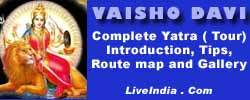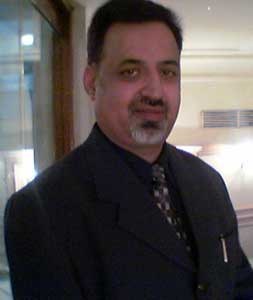

| How to do Shiva Pooja |
 |

| Before learning How To Do Shiva Mantra Jaap let us first understand
What is Japa?
Lord Krishna says in the Bhagvat Gita
Thus highlighting the importance of japam. Japa is a form of devotional worship, invocation, supplication, praise, adoration, meditation and direct, experiential communion. Unless we are actually in a state of samadhi (total absorption), which is rare for most people, japa provides a means to disengage from our racing thoughts and our memories of the past -- mostly the bad ones. The repetition of positive, uplifting, spiritual mantras over and over again lifts consciousness and causes the muladhara chakra to spin clockwise. We feel uplifted. Life does not look so bad, and neither does the past.A sense of forgiveness comes and the future looms bright. The past is forgiven and forgotten.Japam can be done by everyone. However for yagnas certain conditions are mentioned. There are three ways by which one can do Japam
OM is the basic vibration of the cosmic universe. Hence all mantras begin with "OM". Benefits of Japam
Based on the teachings of Sri Harihara in Prasna Marga, we advise that this mantra should be recited for 8000 times in a period of forty days. The recitation of 108 mantra for forty days both in the morning and evening covers this requirement. For other purposes larger number of repetitions are advised. After lighting a lamp and sitting in any yogic posture (preferably Padmasana which is the picture of Lord Shiva in the picture) while facing east. Recite the Maha-mantra 108 times (one rosary) or its multiples in each sitting. This is the greatest work of Maharishi Vashistha. Before commencing the Mahamrityunjaya mantra recite the mantra to the everlasting spirit of the Maharishi vasiShTha for his blessings and guidance which is as follows. Thereafter, perform Rudrabhishek (Ritual offering of the Panca-Amrita or the five forms of nectar as Honey, Ghee, Curd, Milk and Water) on the Shivalinga. Understanding the Maha Mrityunjaya Mantra
OM is not spelt out in the Rig-Veda, but has to be added to the beginning of all Mantras as given in an earlier Mantra of the Rig-Veda addressed to Ganapati. This Mantra is given in the prayer page of my Book "Maharishi Jaimini's Upadesa Sutra". TRYAMBAKKAM refers to the Three eyes of Lord Shiva. 'Trya' means 'Three' and 'Ambakam' means eyes. These three eyes or sources of enlightenment are the Trimurti or three primary deities, namely Brahma, Vishnu and Shiva and the three 'AMBA' (also meaning Mother or Shakti' are Saraswati, Lakshmi and Gouri. Thus in this word, we are referring to God as Omniscient (Brahma), Omnipresent (Vishnu) and Omnipotent (Shiva). This is the wisdom of Brihaspati and is referred to as Sri Duttatreya having three heads of Brahma, Vishnu and Shiva. YAJAMAHE means, "We sing Thy praise". SUGANDHIM refers to His fragrance (of knowledge, presence and strength i.e. three aspects) as being the best and always spreading around. Fragrance refers to the joy that we get on knowing, seeing or feeling His virtuous deeds. PUSTIVARDHANAM Pooshan refers to Him as the sustainer of this world and in this manner, He is the Father (Pater) of all. Pooshan is also the inner impeller of all knowledge and is thus Savitur or the Sun and also symbolizes Brahma the Omniscient Creator. In this manner He is also the Father (Genitor) of all. URVAAROKAMEVA 'URVA' means "VISHAL" or big and powerful or deadly. 'AAROOKAM' means 'Disease'. Thus URVAROOKA means deadly and overpowering diseases. (The CUCUMBER interpretation given in various places is also correct for the word URVAROOKAM). The diseases are also of three kinds caused by the influence (in the negative) of the three Guna's and are ignorance (Avidya etc), falsehood (Asat etc as even though Vishnu is everywhere, we fail to perceive Him and are guided by our sight and other senses) and weaknesses (Shadripu etc. a constraint of this physical body and Shiva is all powerful). BANDANAAN means bound down. Thus read with URVAROOKAMEVA, it means 'I am bound down by deadly and overpowering diseases'. MRITYORMOOKSHEYA means to deliver us from death (both premature death in this Physical world and from the neverending cycle of deaths due to re-birth) for the sake of Mokshya (Nirvana or final emancipation from re-birth). MAAMRITAAT means 'please give me some Amritam (life rejuvinating
nectar). Read with the previous word, it means that we are praying for
some 'Amrit' to get out of the death inflicting diseases as well as the
cycle of re-birth.
|
| Back |
| Shankaracharya Temple - Kashmir | Gangeshwar Temple Diu | Other Details of Shiva |
 |

 |
 |
 |
 |
Rajesh Chopra's comments Please |